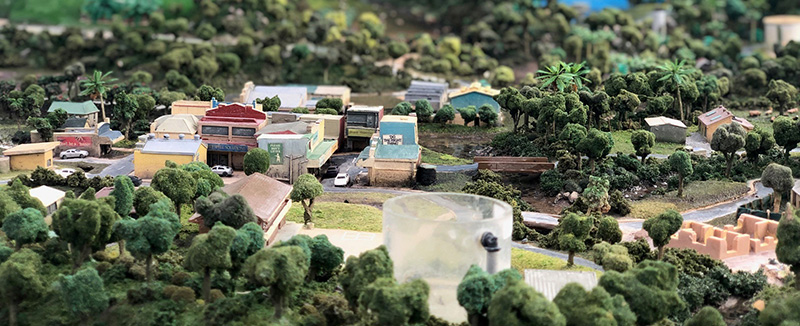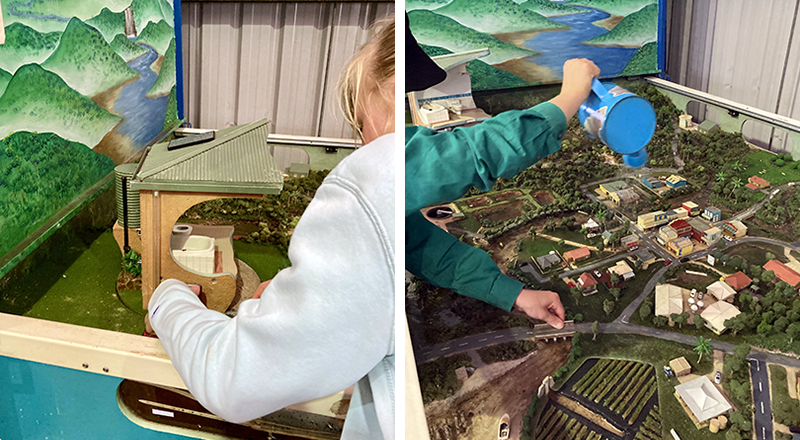
Home » Community education » Your school » Catchment model trailer
Catchment model trailer


The catchment model trailer is available to be brought to schools and organisations; operated by a trained Council officer or educator. Teacher supervision is required. Please complete and submit the Incursion Site Requirements checklist and we will contact you to organise the booking.
Our catchment model trailer is an interactive model of where we live, work and play.
The scaled-down model represents the Richmond and Brunswick catchment with a flowing river, a water supply dam, a town, farms and beaches.
It is a hands-on education tool that demonstrates how agricultural, urban and industrial activities impact water quality.
It illustrates how everything in the environment is interconnected – people, land, other animals, plants – and how together we can support a healthy, living catchment.
The traditional custodians of the catchment area are the Widjabul Wia-bal people. The Widjabul Wia-bal have lived and cared for the catchment area for thousands of years. The water that flows through the land sacred to them.
Engaging and entertaining, it is a key education tool in building understanding and inspiring action for a healthy catchment area.
The catchment model trailer also works to promote land use practices that support our management of the Wilsons River source.
Issues and actions the model helps communicate includes:
- estuary ecosystems
- environmental management practices for industry
- water supply and management
- stormwater, wastewater and greywater
- riparian vegetation
- building site stormwater management
- acid sulphate soil management
- environmental weeds
- marine and terrestrial national parks
- school environment and management plans
- flood levees
- groundwater.
It is suitable for curriculum or educational outcomes aimed at demonstrating:
- What is a catchment?
- What are local catchment management issues?
- What behaviours affect water sustainability?
- How do our daily practices have an effect on the land, water and native plants and animals?
- What choices can we make, or actions can we take, for a healthy catchment?